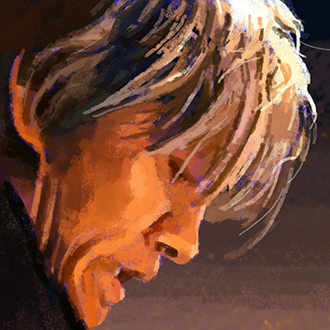 |
||
 Hearing the Love: Ryuichi SakamotoBy Gregory OborneMarch 15th, 2015Posted in Features
I cannot imagine a world without sound. It is as much of the world as light and matter, each one dedicated to giving feeling to all existence. Video games, as a medium, is the only way to bring the sights, sounds and feeling of another reality into our own and bring together all of these senses. This amounts to a powerful and influential way to visit and display themes or ideas that can have an amazing effect for change or discovery for us. Leave it to someone who isn’t even a game developer to take everything video games can achieve, and elegantly impact an entire video game system (and possibly an entire generation) as Ryuichi Sakamoto. Hopefully the name is familiar, but if not I will give a little bit of background to the awarded music composer. Sakamoto is best known for his television and movie scores around the world, several of which earning him Academy Awards, Golden Globes, or Grammy nominations. The start of this musical legacy saw Sakamoto as a member of the electronic pop group Yellow Magic Orchestra in 1978. The group, were pioneers in digital recording and helped to make major contributions to popular electronic music. Yellow Magic Orchestra very much affected the music sound scape in the 1970’s and ’80s providing the groundwork for video game music and inspiring many of the most influential game creators that would come from Japan. Master Programmer Yuji Naka credits Sakamoto and the Yellow Magic Orchestra as factors in his desire to become a video game creator. It is easy to think of where SEGA and the Dreamcast would’ve been without Naka and his contributions. Naka and such fellow creators as the late Kenji Eno (a close friend of Sakamoto) blended the hot pot of fresh and invigorating ideas from Japan that fed game creation for the next several decades. The beauty of Sakamoto’s scores and compositions are the natural flow and harmony in them. There is a grounding nature to his music, sounds feel like tangible organisms of a greater world that Sakamoto has opened a window to. Almost like peering into another reality in our minds that can be felt and seen. Sometimes, Sakamoto uses real world samples like birds or water flowing, this is obviously easy to imagine in our minds. However, more often than not it’s the digitally synthesized noises that create this aurally concrete effect. There is no better example of this sensory sensation then an 8 second composition of Sakamoto’s. We’re all familiar with it here: There is such a robust and otherworldly feeling to the Dreamcast start-up screen. It’s the start of something new. It feels like we are setting off through a portal into a new discovery either from our dreams or the world we live. This is the magic of Ryuichi Sakamoto. Yuji Naka’s animation for the logo perfectly syncs to create this sense of journey and intrigue. The steps of the echoing keys permeate the scene as the letters are stepped upon bringing us closer to our destination. We’re then brought into the Dreamcast with the water-like portal of the Dreamcast Swirl, targeting the entrance with its captivating and simple yet strange appearance. The accompanying sound from Sakamoto gives the feeling that we have now entered this dream scape and have disrupted the fluidity of the doorway inside. It’s such a short and maybe even under appreciated at times part of the Dreamcast, but it really signified what the Dreamcast was and is, every time it starts up there is that beautifully enchanting greeting. While there isn’t much lack of love for the Dreamcast startup screen (it’s very much remembered to anyone that has played the Dreamcast) there is however, a very great deal of love lacking for Sakamoto’s only Dreamcast game, L.O.L. Lack of Love. Developed by Love-de-Lic, L.O.L. Lack of Love is one of only three games that Sakamoto has worked on, and the only game in which he did more than supply music. Together with game director Kenichi Nishi (who has worked on games such as Chrono Trigger, Captain Rainbow, and Chibi Robo) they set out to make a game with a simple theme, helping others. “We should care for other people, life, the environment and nature” said Nishi (in an interview with gamestm.uk). Sakamoto came up with the title, feeling that today’s lifestyle and environment really lacks love. Sakamoto is a very dedicated conservationist and an activist for anti-nuclear organizations. With creating L.O.L., he wanted to be able to display the circumstances and affects that an ill-minded society can have on a planet. A video game, he felt, would be able to convey the different emotions and feelings we can have on other living things and the behavior a player emits on a game world in relation to our own. There are consequences for our actions and how we solve problems with each other. This understanding is crucial to him in spreading the warning of changing our own environment negatively and possibly showing the steps we can take to avoid a fatal outcome. In the game, players begin life as a single-celled organism in a violent and dangerous Eco-system and must travel the planet solving problems, learning about the world and evolving in order to overcome the trials of life. There is a distinctness to the game that grounds the player into this alien world. There is very little HUD and the graphics are done with heavy, juicy colors and a very realistic day to night cycle with changing behaviors for the creatures living there. A lot of the game looks like a painting with great depth to everything. Sustenance is the biggest threat to the player, and often times it is kill or be killed from starvation. This dynamic is crucial in bringing weight to the world and the decisions and actions that must be dealt with. Sakamoto’s score defines each phase of life and every hardship or triumph in the game with a minimalistic flavor that can be easily digested but leaves you fulfilled. The loading screen jingle is probably my favorite, it’s almost as if I am idling at a Japanese train station as I wait for the queue of the next event (train). The wind blows calmly past, hitting the metal of a chime as it plays a deliberate melody like that of the signal announcing the arrival of the train as it settles into the station. Sound is used smartly, there is no background music which creates an isolation effect that is punctured by the creatures noises as they walk about or the sound of you taking a pee. The times that music does play is during important events, putting even more emphasis on them. Playing L.O.L. Lack of Love feels a lot like living. If I were placed into a new environment I’d start off feeling lost and would need to search my surroundings, become familiar with the locals, and figure out what I have to do to keep myself alive. I really cared about the creatures in the game and how I was affecting their lives, by time the ending came I was really pulling for them and their future. For a brief moment I thought about the real world’s future during the ending for L.O.L. Lack of Love. It’s very easy to change something’s world drastically with an indirect action, one that may never be felt or given thought to which makes it easy to disregard. Many times it feels like no matter what we do things cannot change, or how can such a small action result in a change for the better? If only love were as routine as sound. |
||
© 2012-2022 |
|
|
|
|





